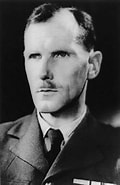This fascinating talk was given by Jean Yates, former Town Centre Manager of Dunstable. The subject originated from a project about ‘Dunstable & District at War‘ in which 100+ people were interviewed including personnel who served at the Meteorological Office in Dunstable during WW2.
The history of weather forecasting
Weather forecasting originated with Captain Robert Fitzroy following the loss of the ship Royal Charter in 1859. Weather forecasts were first published in The Times in 1862. The first televised forecast for the public was in 1936 but these were of limited usefulness until about 1954 when the forecaster could be seen using a pencil and rubber to update the forecast live.
The Meteorological (‘Met’) Office
Before WW2 the Met. Office was based in London but by February 1940 had moved to Dunstable. Dunstable was chosen as Post Office lines ran along the A5 and the Downs helped reception. It was also close to key partner organisations such as Stanridge, Leighton Buzzard (RAF Central Communication Centre) said to be the largest telephone exchange in the world, and the now famous Bletchley Park.
Before WW2, the Met. Office had 43 reporting stations but by the end it had 552. At the start of the War it had 700 staff (all male) but by the end it had 6,000 staff including women (in more junior roles) and a number of foreign staff from countries such as Norway and Sweden. The Met. Office received reports from overseas stations in places like Gibraltar, Egypt, Palestine and Iraq; it also played a key role in cracking the Enigma code as German reports contained a more easily deciphered weather forecast; this then gave access to weather forecasts in enemy territory.
At the site there were a series of specialist departments where both civilians and service personnel worked on a 24-hour cycle to produce a regular stream of weather reports for airfields etc., some delivered by dispatch riders. There were limitations on forecasting. For example, the necessary radio silence on ships meant weather forecasting for the North Atlantic and North Sea was extremely difficult. Also some skills such as upper air monitoring were not sufficiently developed leading to one disaster in March 1944 when 72 of our bombers were lost when they encountered upper air speeds of 120 mph.
Extreme security was required at the site. For example, when the Chief Met. Officer was advised of planned bombing raids he was not allowed to leave the site until the raid was fully completed.
D Day forecasting

Group Captain Dr James Martin Stagg
The head of the Met. Office for Operation Overlord, Group Captain Dr James Martin Stagg, played a key role (alongside US forecasters and the Admiralty) in advising General Eisenhower on the date for the invasion of Europe in 1944. The invasion day needed to be moonlit, have a low tide at dawn, have quiet weather for 48 hours, etc. Early June 1944 was identified but unfortunately June that year had very disturbed weather. Eisenhower’s preferred date of 5 June 1944 had to be cancelled but Stagg was able to advise that there was a short break in the weather on 6 June, when the massive invasion went ahead. Fortuitously the Germans were still forecasting bad weather so were caught by surprise; and the later potential June dates had appalling weather. Stagg was subsequently much honoured for his key role in the successful invasion.
Dunstable at War
The Met. Office was not the only contribution Dunstable made to the War effort. A local firm, Bagshawe & Co. Ltd, built ‘Bombardons’* which became part of the Mulberry Harbours. Thunderstorms were observed and Radar developed by equipment shelters disguised as haystacks on Dunstable Downs. Security printers De La Rue and Waterlows produced huge quantities of German newspapers, stamps, ration books and leaflets to be dropped behind enemy lines to cause confusion. ‘Black’ propaganda was produced at Woburn. At Tempsford air base, low altitude flights were made on moonlit nights over enemy territory to support resistance fighters and transport our undercover agents.
In conclusion
The Met. Office site in Dunstable is now a housing estate, its former existence only remembered in one road and one school name. It moved to Bracknell in 1961 and is now based in Exeter. Hester Gabbutt
Editor’s notes:
* Bombardons were floating breakwaters fitted to the seaward side of the main body of the ‘Mulberrys’.

No Comments
Add a comment about this page